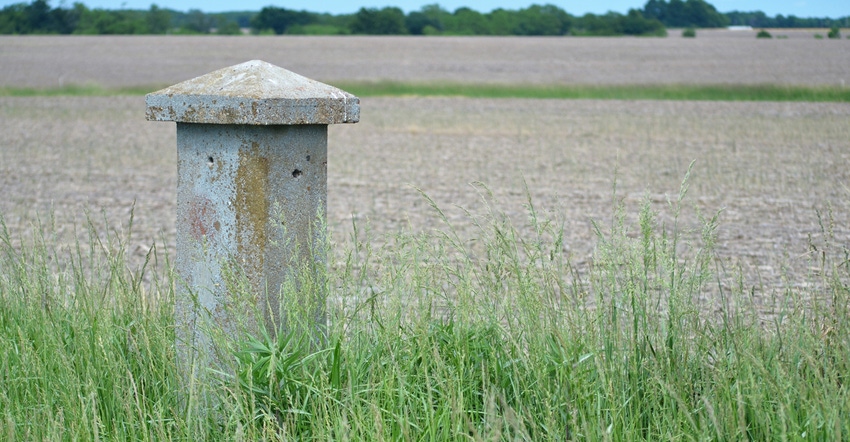July 22, 2022

Traveling the back roads of Missouri, I’ve seen many types of fences and fence posts — from stacked rocks wrapped in wire in Saline County, wooden cedar posts with barbed wire in Texas County, and metal T-posts with woven wire along my own road in Warren County.
But what grabbed my attention on one trip to northeastern Missouri was a stretch of gravel, 310 Pike County Road, where only remnants of anything fence related remained. And it must stand the test of time since these posts are concrete.
I searched for a history of concrete fences on farms in Missouri, but could not find much online. Then I widened my efforts to include all states and found one architecture student, Erin McDonald from Ball State University, who covered it as a thesis topic in 2001, titled “Concrete fence posts: statues in the fields.”
McDonald visited with farmers in Indiana and found that concrete fence posts were created in the early 20th century, and pointed out that literature sources suggest farmers “were encouraged to construct concrete posts on their own.”
There were manufactured concrete fence posts available during that time. However, farmers are the original do-it-yourselfers, and many in the survey noted they built their own molds for the farm concrete fence.
And concrete was fashionable, taking a nod from the English countryside of rock walls. It was also relatively inexpensive when looked at for its durability, so much that businesses and colleges promoted the use and construction of concrete fence posts.
However, McDonald found these fence posts were more a matter of functionality and longevity for farmers, made to “serve farmers’ immediate and long-term fencing needs.”
While some fence structures such as concrete posts last for generations, others have been removed. It is likely due to the evolving nature of agriculture — fewer cattle, more row crops and larger agriculture machinery.
I guess when Robert Frost said, “Good fences make good neighbors,” as way to encourage others to set boundaries and respect one another, the 20th century poet quite possibly thought fences would be around forever, but alas that was not to be.
I’m just glad that while some farmers chose to remove the wire, fragments of agriculture’s past like concrete posts remain across the countryside. It shows that farmers don’t need fences to be good neighbors to each other, the environment or consumers. They always have been.
Of course, it could also be that these concrete fence posts are built so well that they are not coming out of the ground. Either way, I consider it a win for farmers.
You May Also Like




